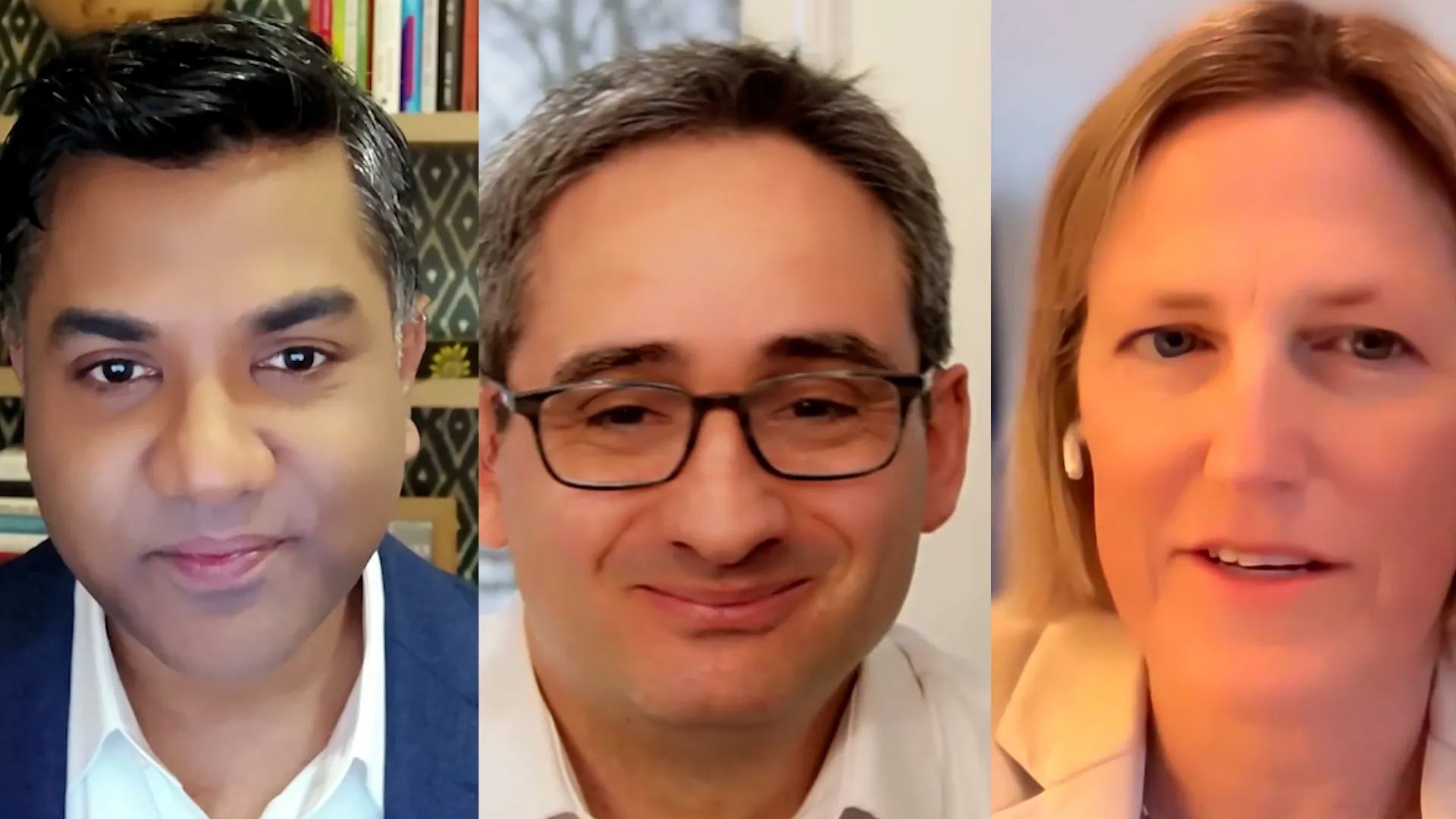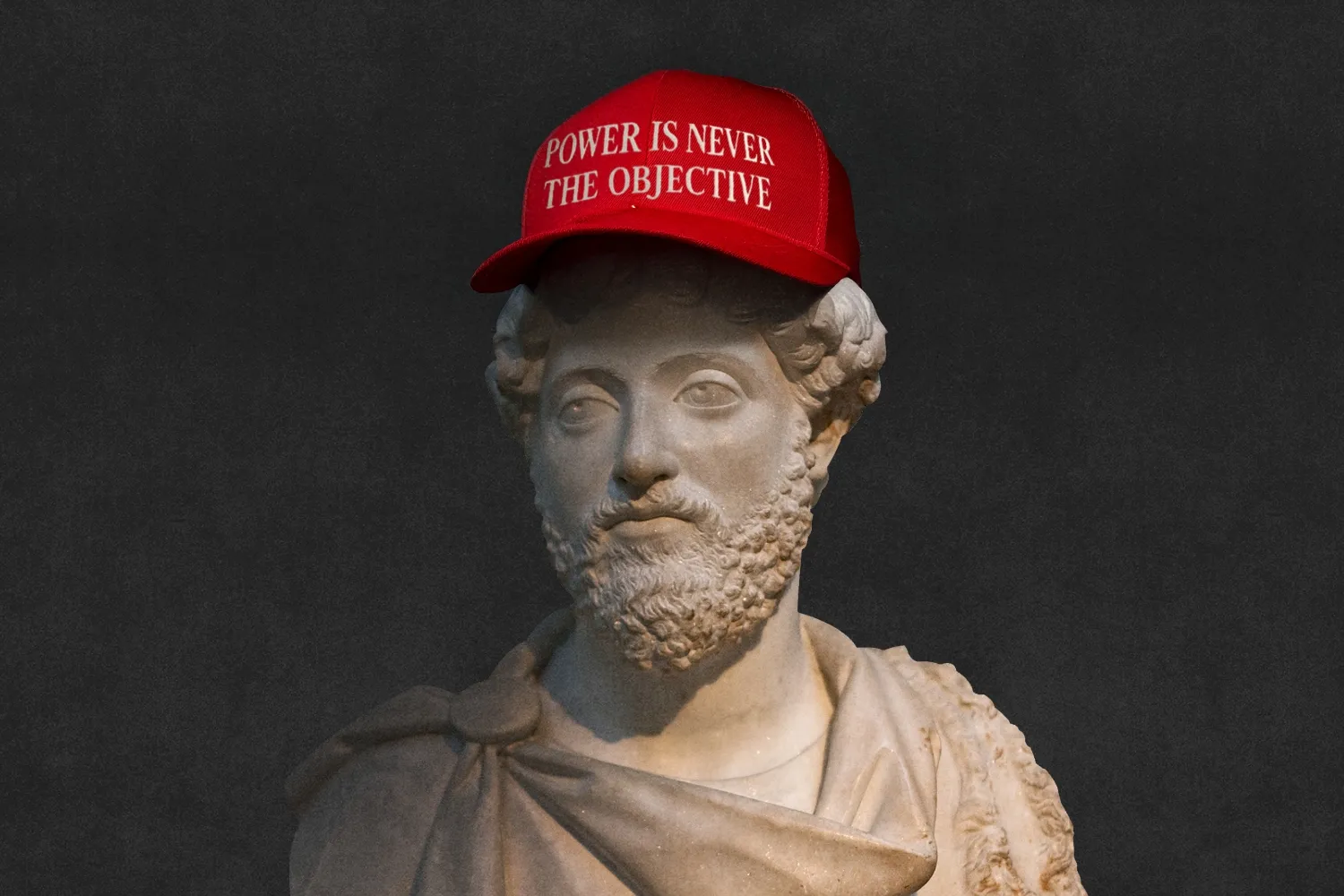A Debate on Trump’s Tariffs

A Debate on Trump’s Tariffs
Conservative economist Oren Cass defends the White House’s goals against Kimberly Clausing, who calls the April 2 moves “shambolic” and “self-destructive.”
On Monday, U.S. stocks briefly entered bear territory, which means a 20 percent drop since a recent high. Oil prices have fallen to their lowest levels in almost four years. Even the dollar, which usually rises when tariffs are imposed, has fallen by 5 percent since January, indicating a loss of faith in American economic prospects.
The markets seem in sync with the views of most economists, who have described U.S. President Donald Trump’s April 2 tariffs as a major misstep, to put it mildly. But there are some economists who support Trump’s tariffs, if not in execution, then at least in principle. One such economist is Oren Cass, the founder of American Compass, a conservative think tank. Cass is seen as a leading voice articulating the economic agenda of the New Right. For the latest episode of FP Live, I thought it would be useful to pit Cass against Kimberly Clausing, an economist and professor at the University of California, Los Angeles, and the author of Open: The Progressive Case for Free Trade, Immigration, and Global Capital. Subscribers can watch the full discussion in the video box atop this page. What follows here is a condensed and lightly edited transcript.
On Monday, U.S. stocks briefly entered bear territory, which means a 20 percent drop since a recent high. Oil prices have fallen to their lowest levels in almost four years. Even the dollar, which usually rises when tariffs are imposed, has fallen by 5 percent since January, indicating a loss of faith in American economic prospects.
The markets seem in sync with the views of most economists, who have described U.S. President Donald Trump’s April 2 tariffs as a major misstep, to put it mildly. But there are some economists who support Trump’s tariffs, if not in execution, then at least in principle. One such economist is Oren Cass, the founder of American Compass, a conservative think tank. Cass is seen as a leading voice articulating the economic agenda of the New Right. For the latest episode of FP Live, I thought it would be useful to pit Cass against Kimberly Clausing, an economist and professor at the University of California, Los Angeles, and the author of Open: The Progressive Case for Free Trade, Immigration, and Global Capital. Subscribers can watch the full discussion in the video box atop this page. What follows here is a condensed and lightly edited transcript.
Ravi Agrawal: Let’s start with some opening reflections on the April 2 tariffs. Kim, let me start with you.
Kimberly Clausing: This is the single most self-destructive economic policy move I’ve seen in my lifetime, for three reasons.
One: It’s a very large consumer tax increase. Recent calculations have suggested it adds some $3,800 of costs to the typical household. This will more than dwarf any possible tax cut coming out of the budget process. And it’s a regressive tax that falls disproportionately on those lower in the income distribution.
Second: It will be terrible for U.S. production. Our exporters are our largest importers. Production often crosses borders, many times. So we’re disadvantaging American production by making our firms pay more for any input than their competitors would abroad. And that’s before we even get to the retaliation.
The third problem is the shambolic and misguided way that they implemented this. Even if you wanted to have tariffs to promote strategic industries or de-risk from China, for example, these tariffs are on every country in the world. They’re calculated using the bilateral trade deficit as a proxy for protectionism. But that really is a useless proxy for protectionism, and we can see that with many examples. For instance, we’re levying a huge tariff on Korea, and they’re our free trade area partner. They don’t have big barriers against our products, but yet they will face this giant tariff.
So this is a really dysfunctional and poorly executed articulation of an idea that was already a terrible idea.
RA: I think it’s fair to say that is largely the mainstream consensus view. Pick up your newspaper of choice and you will read editorials and pieces outlining that argument. Oren, you have been making the case for Trump’s tariffs. I know you don’t agree with everything in the April 2 announcement, but in the main, what is the case for these tariffs?
Oren Cass: It’s important to distinguish between the conceptual argument for tariffs and the specifics here. Because the reality is, even if the Trump team had developed the most carefully thought-out, thorough, well-communicated set of tariffs, a lot of economists would still say essentially the same things because they see tariffs as invalid. And I don’t agree with that. Tariffs can, and probably need to, play an important role in our policy.
With respect to the tariffs Trump announced, I would treat them essentially in three buckets. It seems to me one element is the global 10 percent tariff. That’s a policy that we’ve been very supportive of at American Compass. I think it’s useful. And ideally, it would become permanent through legislation. At a 10 percent level, it would be disruptive, but not fatally so. If it is established as a stable part of our economic policy, I think it could do a lot of good.
The second focus is on China. With all of the tariffs considered, we’d potentially be near 60 percent. We should try to get there; our goal should be to be decoupling from China. It doesn’t work to have free trade with an authoritarian, communist, state-controlled economy. And there’s bipartisan legislation in Congress to revoke permanent normal trade relations and even push tariffs as high as 100 percent. But it phases them in. Phasing in at 20 percent a year could be quite worthwhile, especially if allies commit to the same.
The third piece is the reciprocal tariffs, which I think Kim rightly focused on. For one thing, there has been a lot of confusion over what they actually are, how they’re calculated, what their purpose is, and what we’re asking allies to do. If you’re going to threaten or impose consequences, you need to be clear on what the problem is and what your expectations are. The Trump administration has not made that case, certainly not about why those tariffs should snap into place on one day. It’d be very reasonable for the administration to tell those allies that have run long-term systemic trade imbalances with us (including South Korea): “Look, you are making policy choices that are affecting this. We would like to change your interest calculation so you make different policy choices.” I think that’s very reasonable. But the method would have to be different than what we’ve seen so far.
RA: Oren just said most economists instinctively disagree with tariffs as a policy. Is that true? Are there aspects of tariffing that you think could be useful for the United States to deploy?
KC: There are certainly several cases where economists would agree that a tariff might be called for. One is national security. We don’t necessarily want free trade with our adversaries, and we want to make sure that we have domestic control over vital national security supply chains. Another is in response to unfair trading practices when they truly are unfair trading practices. In that case, we can go through a process that would enhance the rules-based international trading system.
What we’re seeing today is very different from that. These are tariffs as fiscal policy, including that broad 10 percent tariff. A 10 percent tariff on everybody is still distortionary, reorienting production toward things that we could ordinarily import for less and away from things that we’re good at, our export industries. So there are downsides to a tariff that broad.
These reciprocal tariffs also have a misguided root, which is this obsession with bilateral trade deficits. There’s no reason to fetishize a bilateral trade deficit. Take, for instance, Madagascar. They produce very simple textiles. They produce vanilla. And we’re now tariffing them at 47 percent. It’s an extremely poor country. The bilateral trade deficit reflects the fact that we want vanilla and inexpensive textiles, and they’re a poor country that can’t afford our exports. So we’re not punishing them with high tariffs because of some natural comparative advantage. That’s a deeply wrongheaded way to do it. Or if we flip it, and look at countries like Brazil, Peru, or Australia that we have surpluses with, is the U.S. doing something wrong? Would we be OK with them tariffing us because we happen to produce things they like? It’s not a true reciprocity. It strikes me as a deeply misguided way to implement this notion.
RA: Oren, are there things that were implemented in the last week that you disagree with?
OC: Firstly, on the question of immediate implementation versus phase-ins, it’s important to be credible so people believe you will do what you say you’re going to do. But once you’re over that threshold, phasing tariffs in, especially high tariffs, makes sense. You’re trying to change market incentives, but it’s going to take time, obviously, for markets to adjust, for supply chains to shift, and for production to move to the United States. You want people to move as quickly as they can because they understand that it will be happening. But beyond that, moving immediately hits people with costs that do not incentivize moving faster and also creates potential disruption if people don’t have an opportunity to get their houses in order.
On the flip side, you need certainty and stability if you want people to change their behavior. People need to understand what to expect three years from now, not just three weeks from now. Certainly there is work to do there, both in how the administration has proceeded and, ideally, in working with Congress to legislate something permanent.
Third, just briefly, the administration needs to do a better job communicating the actual goal and expectation. Do you want a free trading bloc, with China kept out of it? Do you want bilateral balance everywhere? Or is it a negotiation tactic intended to create relatively more balanced trade within a bloc? Beyond just the certainty, people need to be able to forecast what they should be doing. So, ideally, the approach would change there. There is, by the way, room to correct course.
RA: Kim, let’s talk about inflation. By some accounts, Trump won partly because of a general frustration about higher prices and inflation. And Yale’s Budget Lab as well as the Peterson Institute have been clear that these tariffs represent a regressive tax. In other words, if prices rise on regular goods, then lower-income families suffer disproportionately. How is the inflationary aspect playing out, and over what time frame?
KC: There’s already upward pressure on prices from these policies, and some of that upward pressure comes from anticipation. If I’m expecting tariffs and I own a lumber yard, I might want to pre-order lumber so I know I have some in stock. But if there’s the same amount of supply, and demand starts to rise, you see upward pressure on prices.
Most economists, myself included, think that these tariffs will lead to a one-time jump in the price level as opposed to ongoing inflationary pressure. But that jump is going to be very significant and large. It won’t go unnoticed by households. If you’re levying a tax increase of $3,800 on a median family each year, they’re going to notice that things are more expensive when they go to the store.
This is not a good source of fiscal revenue. Globally, most rich countries don’t rely on tariffs to raise revenue. They realize that tariffs are a uniquely bad way to raise revenue because they’re both distortionary and regressive.
Take the regressive part first. Poor consumers and middle-income people tend to spend all of their income every paycheck, and that causes the tariff to burden them directly. If you’re a richer household, you may be saving half your income, buying some kids’ tuition, going on some trips. So the tariff burden that you’re feeling as the share of your income is much smaller. That’s what our analysis and other sources find. This is a source of revenue that’s hurting the very same people that were upset by inflation.
The distortion is important here, too. We can’t produce everything in the United States. I’m not sure people want to sew their own clothing. I’m not sure they want to make vanilla. So this sort of slapdash attempt to produce everything here fundamentally just disrupts supply chains and creates unemployment and new labor shocks. I agree that if you’re introducing a shock, you should do it slowly. But there is also this question of why introduce this shock at all; there are better ways to raise revenue, including a value-added tax, or letting the Trump tax cuts expire, which wouldn’t cause a large fiscal burden but would really help right the ship. And I think there’s a bunch of other ideas, too, for tax reform that could be far more efficient than what we’re seeing here.
RA: Oren, can you respond to the points that tariffs are a regressive tax, that they will hurt regular people, and that America doesn’t want or need to make everything? How do you square all of that?
OC: Let me separate the fiscal question from what I call the substantive question. Because it’s important to say I don’t think tariffs are an ideal tax base. If we didn’t care about trade at all, I wouldn’t argue to try a bunch of tariffs.
But it is important to recognize the revenue as a benefit that tariffs provide. If you don’t, you tend to get some very skewed analyses that treat the money as simply set on fire. That is, if the U.S. does collect a trillion dollars of tariff revenue, that is coming out of the pockets of whoever pays it. Consumers certainly pay a part of it. But I’m puzzled when economists throw their incidence analyses out the window and just assert that consumers pay all of it. There are costs associated here, but the gross cost is not the net cost. If you take that revenue and use it to reduce the deficit, that obviously has real economic value. If you take that revenue and use it to reduce other taxes, maybe you’d say you’re shifting to a less efficient tax base, but the cost is that shift in base, not the gross cost of the tariff. If you use it to fund important investments, again, you have imposed a cost, but you’ve also provided a benefit. That revenue is not the reason to impose a tariff, but it is an element of the equation that is important not to overlook.
This gets to the substantive side. Do the tariffs’ benefits exceed the cost, bearing in mind that you do get that revenue? This is obviously where Kim and I most strongly disagree; it comes down to the question of whether we think making things matters. I’m certainly not calling for autarky and making everything ourselves. I would love to see high levels of balanced trade. And, by the way, you can only get revenue if trade is still happening, obviously. But reindustrialization, the rebuilding of the American industrial base, should be an important priority. It has value beyond what private actors will take into account. And so public policy must play a role.
Given that, it’s best to analyze it then as a two-step question. One, can we at least agree that making things matters and that reindustrialization is an important policy goal? If not, then obviously we’re going to disagree on tariffs, but the disagreement isn’t about the tariffs. And so there are people, like Michael Strain of AEI [American Enterprise Institute], who don’t want to reindustrialize or don’t think it’s important. But if we agree on the goal, then the question is, can tariffs play an important role in achieving it? One thing I would say is, I don’t think tariffs solve it alone. But if you want actors in the market to take into account that we have a preference for domestic production, then an intervention that shifts prices toward domestic production is an important element in that strategy.
RA: Kim, I don’t think you were saying that manufacturing does not matter. But I’m curious how much you think it matters and where it fits in versus services. Because, of course, while the United States has a net deficit on goods, it has a surplus on services. And that has been strangely missing from discussions over the past week and certainly on April 2.
KC: So, there’s been an over-fetishization of manufacturing. That doesn’t mean that there aren’t industries where it’s important to have your own production. I agree with that. Defense is an excellent example. We might see other industries as strategic: investments in the chips industry (which the Trump administration called a mistake), investments in green energy. When you find strategic industries that you want to encourage, there are good ways to do that. You can subsidize them to give them an incentive directly. They still face the test of world markets. So you’re not creating an isolationist, separate industry that’s protected by trade barriers. When you use high tariffs to protect your domestic industry, it will never thrive on the world markets because it will be dependent on a buffer insulating it from the world market.
There are also some valid goals in terms of how we address income inequality in this country. Some argue tariffs are a good way to do that. I disagree, simply because tariffs fall disproportionately on those at the bottom end of the income distribution.
If we’re worried about left-behind communities and deindustrialization, we have better tools. We invest in subsidies for strategic industries. And we deal with income inequality through a progressive tax system, a stronger safety net, and investments in community college and infrastructure that can help make workers more productive. Those are all direct, time-tested ways to make Americans more prosperous, as opposed to high taxes, a disruptive shock, and falling asset values that cut into retirement accounts. Look at the savings we’ve lost these last few days. That’s a market verdict telling us that tariffs won’t make the United States more prosperous.
RA: But Oren, are you saying that these manufacturing jobs are in some way more desirable than jobs in services? Because some of this is also tied to one’s perception of how the U.S. economy is performing. And inequality aside, which tariffs could exacerbate, the American economy is doing remarkably well by most metrics, especially compared to peers.
OC: It’s true that the U.S. economy has been at the top of a business cycle, but over the long run, the economic fortunes look very different for a typical worker without a college degree in terms of wage growth, in terms of ability to obtain middle-class security. That’s one thing I’ve been most frustrated by in these recent debates: people pointing out that the average service job pays more than the average manufacturing job. That’s true, but it’s not a like-for-like comparison. The question is what a worker without a college degree could earn in the manufacturing sector versus the kind of service job that person could have. If you do that comparison, the manufacturing jobs available to workers who have been left behind are actually quite good. And David Autor and his colleagues (who were best known for their China shock research) just published an excellent paper called “People Versus Places.” It showed in detail that when you deindustrialize, of course, other jobs replace the ones you lose, and you can still be at full employment. But you end up replacing them with good jobs for a different set of workers and less good jobs for workers who previously worked in manufacturing. It’s not that there’s something inherently ennobling about manufacturing. It’s that the jobs available in manufacturing in terms of who can take them, how productive they can be, their location outside of coastal areas where so much of our prosperity grows, all come from manufacturing jobs but not the services jobs that replace them.
RA: Kim, what are your main disagreements with Oren’s thesis here?
KC: This last comment gets to the heart of the matter. If you are trying to think about improving the experience for a left-behind region by levying a tariff, we can look at studies done on the first Trump administration’s tariffs that asked these questions. Did it cause more manufacturing employment? Did it cost more production in key sectors? Did it help those left-behind regions? Study after study shows the job loss associated with the supply chain disruption and retaliation exceeded the job gains in these narrowly protected sectors. So using this policy tool to create anything other than disruption and regressivity is mistaken.
But we’ll run this experiment and see that production actually goes down for U.S. manufacturing. Imagine you were trying to site a plant this year, and your choice is to put it in the United States where there’s uncertainty about institutional strength, about what tariff rates will be tomorrow or three months or a year from now, where every country wants to retaliate, and where every part will be more expensive. Or I could site that plant somewhere that gives me free trade access to my parts, a stable policy environment, and a fiscal situation that is under control. This willy-nilly tariff policy won’t get anywhere near the desired policy goals.
I care about those goals, too. And I respect Oren’s genuine desire to address the left-behind in this country. I just think this tool will make their lives much harder, not much better.
RA: Oren, how would you respond to that? The other discrepancy that the markets have likely been worried about the most is that if Trump stays the course on the current tariffs, there will be a lot of short-term pain. But it doesn’t seem like he will stay the course; we’ve been hearing that he wants to use tariffs as a negotiating tool. And then you have too many carve-outs, and it’s unclear whether it accomplishes the longer-term goals you’ve listed. So how do you balance the uncertainty with the broader goals that you’ve been advocating for a long time?
OC: I agree absolutely that the uncertainty might raise the costs dramatically and reduce the benefits. That’s a real problem. I agree with Kim that a willy-nilly approach will not deliver the things I’m focused on to a significant extent. And so that’s why my perspective separates the potentially useful tools from a discussion of what’s going on at this moment. I argue, yes, these are useful tools, but there probably is a pretty significant course correction needed if we’re going to get the value that we could out of them.
Ravi Agrawal is the editor in chief of Foreign Policy. X: @RaviReports
More from Foreign Policy
-

American flags are draped around tables and pipes in a small factory room as women work at sewing machines to produce them. Tariffs Can Actually Work—if Only Trump Understood How
Smart trade policy could help restore jobs, but the president’s carpet-bomb approach portends disaster.
-

Donald Trump looks up as he sits beside China’s President Xi Jinping during a tour of the Forbidden City in Beijing on Nov. 8, 2017. Asia Is Getting Dangerously Unbalanced
The Trump administration continues to create headlines, but the real story may be elsewhere.
-

Trump announces tariffs Trump’s Wanton Tariffs Will Shatter the World Economy
Economic warfare is also a test for U.S. democracy.
-

The Department of Education building in Washington, DC on March 24. Why Republicans Hate the Education Department
Broad popular support means that even Ronald Reagan failed at dismantling the agency.











Join the Conversation
Commenting on this and other recent articles is just one benefit of a Foreign Policy subscription.
Already a subscriber?
.
Subscribe
Subscribe
View Comments
Join the Conversation
Join the conversation on this and other recent Foreign Policy articles when you subscribe now.
Subscribe
Subscribe
Not your account?
View Comments
Join the Conversation
Please follow our comment guidelines, stay on topic, and be civil, courteous, and respectful of others’ beliefs.
Change your username |
Log out
Change your username:
CANCEL
Confirm your username to get started.
The default username below has been generated using the first name and last initial on your FP subscriber account. Usernames may be updated at any time and must not contain inappropriate or offensive language.